Indian clothing is known for its vibrant colors, intricate designs, and rich cultural significance. With a diverse population of over 1.3 billion people, India has many traditional clothing styles that reflect the country’s complex history and diverse regional cultures.
From the brightly colored saris of the north to the flowing lungis of the south, Indian clothing has a unique style instantly recognizable worldwide. Let us explore the history, significance, and variety of Indian apparel and how it has become integral to the country’s identity.
Famous Indian Clothing for Men
Men wear Vetti, Achkan/Sherwani, Kurta/Lungi, Bandhgala, Angarkha, Jama, Dastar, Mysore Peta, Rajasthani safa, and The Kashmir shawl. The government of India has also officially recognized pants and shirts from the West as part of traditional Indian wear.
1. Lungi
The Lungi, or sarong, is another type of traditional Indian clothing. A Mundu is a type of garment like a lungi, but always white. It is worn at the waist, over the hips, up to the knees, or out at the ankles. It is customary to tuck it in while working in fields or workshops and to leave it open at religious institutions and when meeting with dignitaries as a sign of respect.
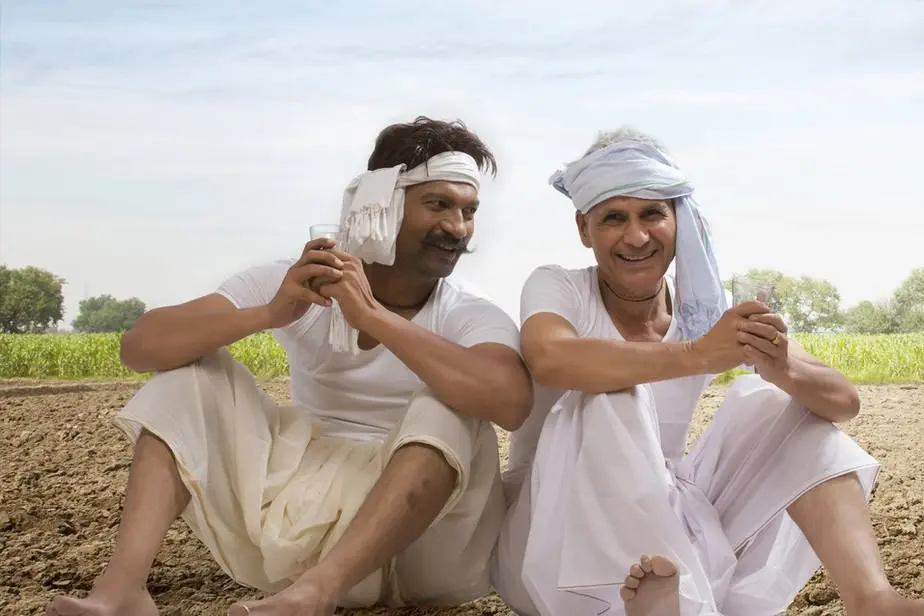
There are two primary varieties of Lungi: the open Lungi and the stitched Lungi. An open lungi is simply a flat piece of cotton or silk, while a stitched lungi has had its loose ends sewn together. Although males are more likely to be seen in a lungi, many older women also choose to wear them due to their comfort and breathability.
2. Achkan/Sherwani
An Achkan is a short jacket with open buttons down the front. The typical length for a coat is slightly below the knee, and it stops at the knee on the wearer. The Sherwani, a considerably longer coat-jacket dress, is stylistically comparable to the Achkan.
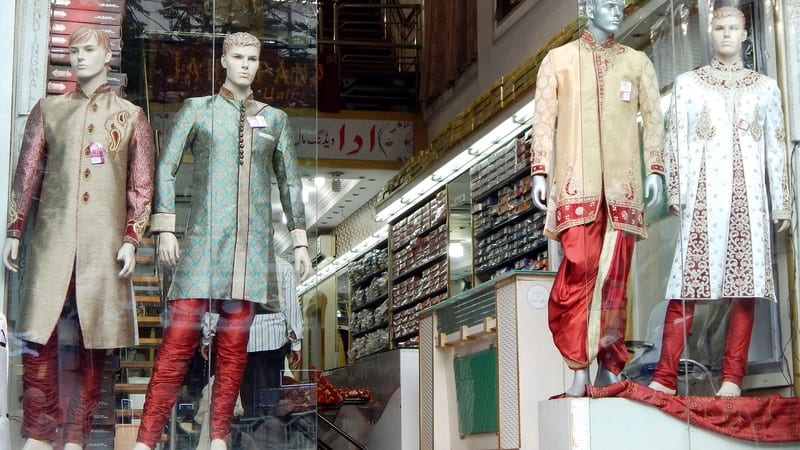
There is a Nehru collar on the jacket. Most commonly, the Achkan was paired with a pair of churidars, a type of slim-fitting pant. You can find an achkan in various fabrics, perfect for dressing up or down. The achkan is embroidered with classic Indian motifs like gota and badla.
Before the Nehru Jacket became more popular, grooms on the Indian subcontinent often wore an achkan to weddings and other formal celebratory events. Men primarily made use of it. It is common for people from Rajasthan, Punjab, Uttar Pradesh, and Hyderabad to wear Achkans to formal events during the colder months of the year.
Famous in India now is the Nehru Jacket, which developed from the Achkan. Gold or silver thread can be used to embroider it. A scarf, known as a dupatta, may also complement the achkan.
3. Bandhgala
A bandhgala is an Indian evening outfit. The British Raj in India helped spread the popularity of this style, which had its roots in the Jodhpur State. It’s a suited product in the Western style, consisting of a jacket, pants, and sometimes a vest.
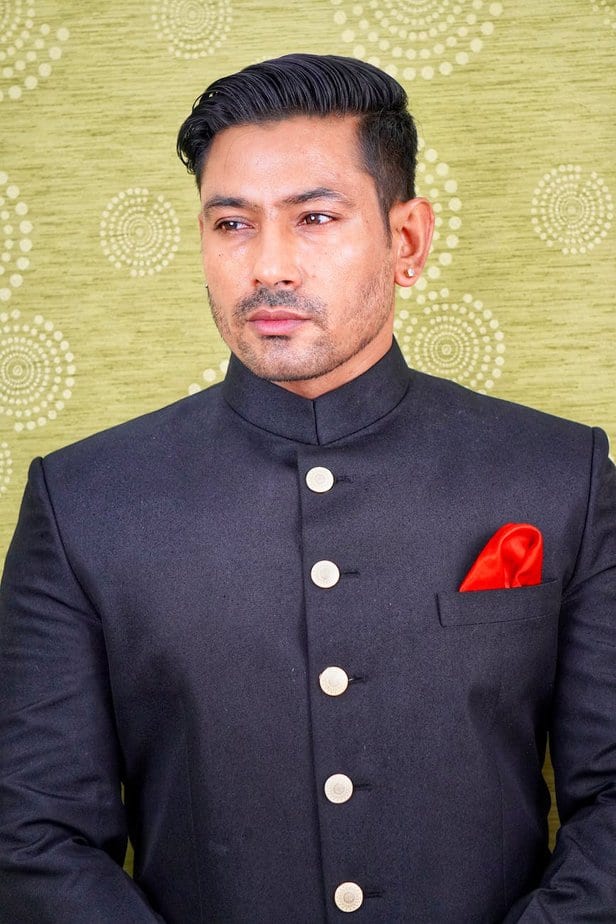
It’s a waistcoat-escorted mashup of a classic Western silhouette and intricate Indian hand embroidery. It works for formal events like weddings and parties. You can use silk or any other suitable fabric. As is customary, embroidery lines the collar and the areas around the buttons.
As a rule, you want your pants to go with your jacket. Similarly, pairing a coat with contrasting color pants has become fashionable. Originally from Rajasthan, the bandhgala swiftly spread throughout India for formal and semi-formal occasions.
4. Dastar

Sikhs in India traditionally wear a turban called a Dastar, also known as a pagri. It is a Religious Symbol Representing Valor, Honor, and Spirituality. The Kesh, one of the Five Ks of Sikhism, requires that the Sikh’s hair remain long and uncut. Hence this headgear is worn for that purpose. Different Sikhism sects, such as the Nihang and the Namdhari, have developed distinct dastar styles.
5. Rajasthani Safa
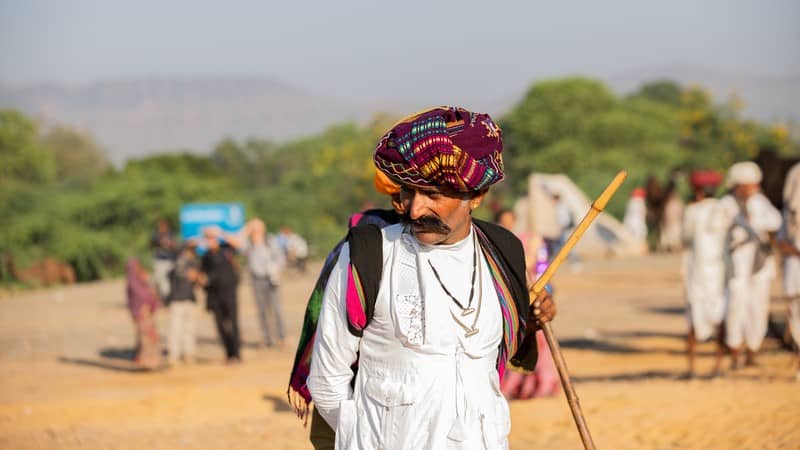
In Rajasthan, turbans are known as pagari or “safe.” The wearer’s caste, social status, and geographical origin can be deduced from the style and color of these items. Turbans are typically more baggy and oversized in arid climates. While the safe is more common in Marwar, the paggar is more common in Mewar.
Both the pagari and its coloration are considered sacred. Saffron was once associated with bravery and gallantry. When someone was in mourning, they wore a white turban. The gift of a turban symbolized an eternal bond.
6. Phiran
Phiran is a traditional garment worn by men and women in the Kashmir valley of India. It is a long, loose-fitting gown made of wool or other warm fabrics, worn to protect against the cold weather in the region. The Phiran is typically made in bright colors and may be embroidered or embellished with intricate designs.
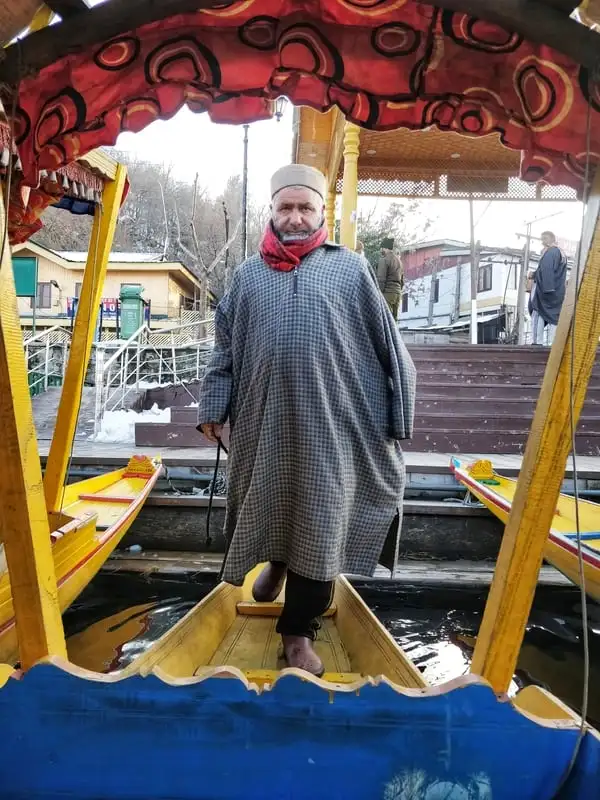
In Kashmiri culture, the Phiran is considered a symbol of identity and tradition. It is often paired with traditional headwear, the Kasaba, and worn on special occasions such as weddings or religious festivals. The Phiran has been an essential part of Kashmiri culture for centuries. It continues to be a popular garment among the locals and tourists visiting the region.
Famous Indian Clothing for Women
Women in the north and east of the country typically wear saris with choli tops, lehengas with cholis and a dupatta scarf, or shalwar kameez suits. Many women in the country’s south still wear the sari, and children in the south often don the pattu langa.
7. Salwar Kameez
The salwar kameez is a traditional dress for women in the Punjab region and the surrounding states of Punjab, Haryana, Himachal Pradesh, and Jammu & Kashmir. Salwar Kameez consists of a loose pair of pants (the Salwar) tapered at the ankles and a long, tunic-style shirt (the Kameez).
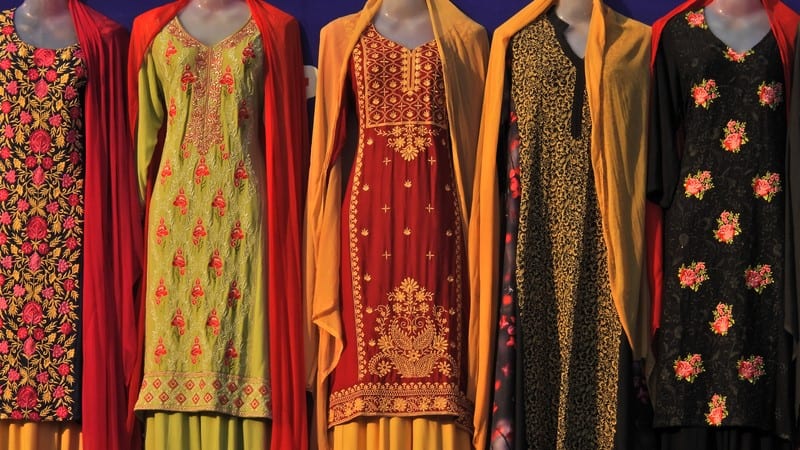
The Salwar is a loose-fitting pant tapered at the ankle, while the Kameez is a long tunic reaching the knees or below. The Kameez may be fitted or loose, with various necklines and sleeve styles. The Dupatta is a long scarf draped over the head or shoulders and can be used for modesty or as a fashion accessory.
Salwar Kameez is available in various fabrics, including cotton, silk, chiffon, georgette, and crepe. They are also available in multiple styles, from simple and elegant to heavily embroidered and embellished with sequins, beads, or stones.
Salwar Kameez is a versatile outfit that can be worn for casual and formal occasions, depending on the style and fabric. It is also popular among women of all ages, from young girls to older women, and can be worn year-round.
Overall, Salwar Kameez is a comfortable, practical, and stylish traditional outfit that has become essential to South Asian culture and fashion.
8. Churidar
Churidar is a traditional Indian garment popular among men and women. It is a form of pant that is fitted at the waist and hips and tapers at the ankle with a bunching of excess fabric known as “bangles,” which creates a beautiful effect around the ankle. Churidar is typically worn with a long tunic called Kurta or a Kameez.
Churidar is available in various fabrics, including cotton, silk, and chiffon. They are also available in multiple colors and designs, from simple and plain to heavily embroidered and embellished with sequins, beads, or stones.
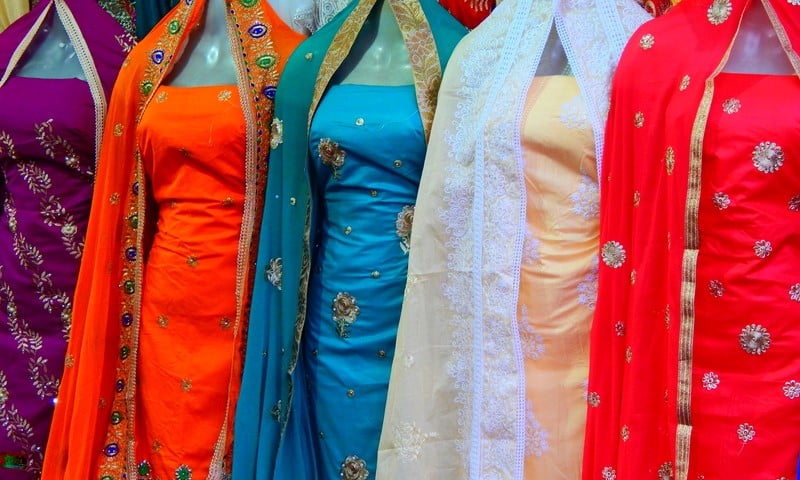
Churidar is a versatile garment that can be worn for casual and formal occasions, depending on the fabric and design. It is famous for festivals like weddings, religious ceremonies, and parties. Churidar can also be worn for everyday use, especially during the hot summer when the lightweight cotton fabric provides comfort and breathability.
Churidar is a practical, comfortable, stylish traditional garment integral to Indian fashion and culture. It is popular among men and women and is an excellent example of how traditional garments can evolve with changing times while retaining their cultural significance.
9. Anarkali Suit
The Anarkali suit is recognizable by its long, frock-like top and slender, form-fitting bottom. Wearing an Anarkali is a status symbol for women in Northern India, Pakistan, and the Middle East. A wide range of lengths and embellishments are available for the Anarkali suit, from short to floor-length. Women also frequently choose elaborately embroidered Anarkali suits for weddings and other special occasions.
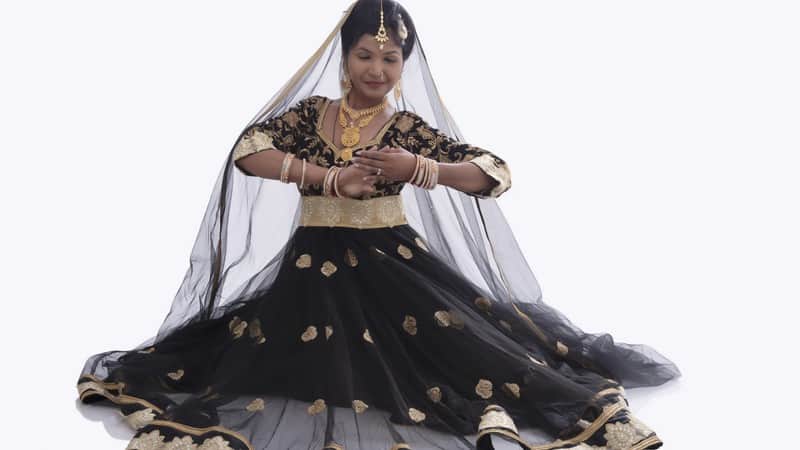
Anarkali suits are trendy in India, especially for weddings, formal events, and festivals. They are available in various fabrics, including silk, chiffon, georgette, cotton, and more. They also come in multiple colors and designs, from simple to elegant to ornate and luxurious.
Overall, Anarkali suits are timeless and elegant traditional Indian clothing perfect for any occasion.
10. Lehenga Choli
Women in Rajasthan and Gujarat typically wear Lehenga Choli. Some Punjabi folk dances feature their use, and the participants also wear them. It’s a lehenga, a choli, and an odhani. A lehenga is a type of long pleated skirt. Customary embellishments include embroidery or a substantial border along the hem.
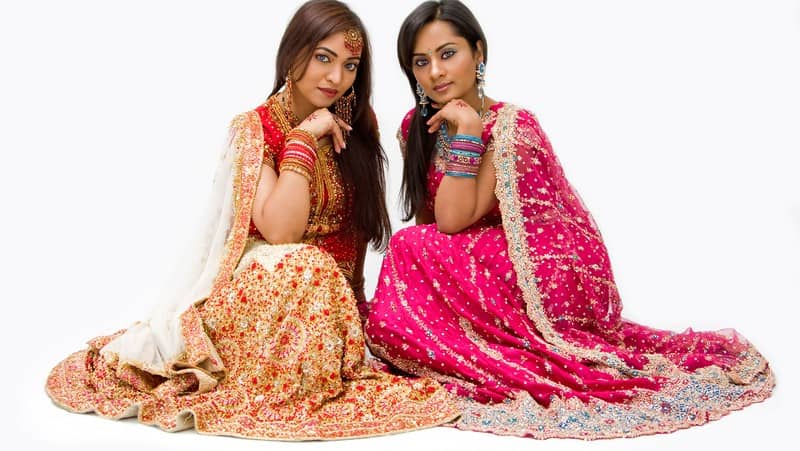
Lehenga Choli is a traditional Indian outfit worn by women, especially on special occasions like weddings, festivals, and formal events. It consists of a long skirt (lehenga), a fitted blouse (choli), and a scarf or Dupatta draped over the head or shoulders.
The skirt is usually made of rich fabrics like silk, velvet, or brocade and is often heavily embroidered or adorned with intricate work like zari, zardozi, or sequins. The choli or blouse is also heavily embellished and can be designed in various styles, such as the halter neck, backless, or off-shoulder.
Lehenga Choli is a trendy outfit in India and is worn by women of all ages. It has a timeless elegance and is considered one of the most glamorous and graceful traditional Indian outfits. Lehenga Choli comes in various colors and designs, from simple and elegant to ornate and grand.
It is often paired with traditional jewelry like bangles, necklaces, and earrings and is completed with a pair of high-heeled sandals or juttis. Overall, Lehenga Choli is a beautiful, elegant outfit showcasing India’s rich cultural heritage. It is a perfect choice for anyone looking to add a touch of traditional charm to their wardrobe.
11. Sari
Women on the Indian subcontinent traditionally wear something called a saree or sari. A sari is a length of fabric, usually between four and nine meters, worn wrapped around the body. Half-sarees, a three-piece outfit consisting of a langa, a choli, and a stole draped over it like a saree, are appropriate for adolescent females. Traditionally, women dress in full sarees. Traditional handloom saree manufacture is crucial to the growth of rural economies.

12. Sharara
Sharara is a traditional Indian garment worn by women. It consists of loose, flowing pants that flare from the waist and is usually paired with a long tunic top. The pants typically have a fitted waistband and can be heavily embroidered or adorned with embellishments such as sequins, beads, or stones.
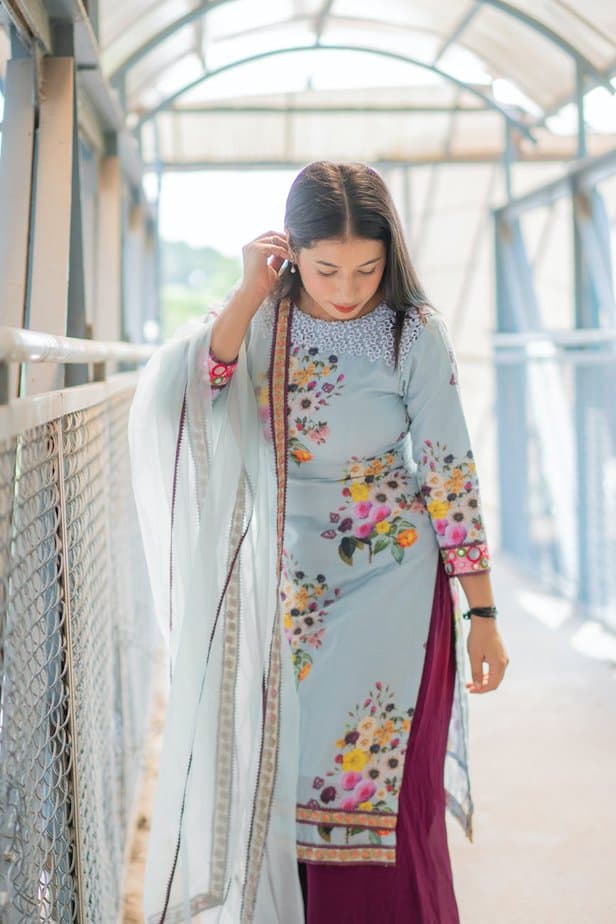
Women commonly wear sharara at weddings, formal events, and religious occasions. It originated in the Mughal era in India and has since evolved to incorporate different styles and designs. It is a popular choice among brides for their wedding ceremonies, and it comes in various fabrics such as silk, georgette, chiffon, and crepe.
Sharara is typically worn with traditional jewelry, such as jhumkas, bangles, and a necklace, and is paired with high heels or sandals. This versatile garment can be styled differently, depending on the occasion.
Sharara has gained popularity worldwide and is now available in many online and offline stores. It is a beautiful and elegant garment that celebrates Indian culture and tradition.
FAQ
Where should sarees be stored so they don’t get damaged?
1. Cleanliness: Make sure your sarees are clean before storing them. Any stains or dirt left on the fabric can cause discoloration or damage.
2. Dryness: Keep the sarees dry with low humidity levels to avoid any mildew or mold growth. Do not store them in damp areas like basements or attics.
3. Dark and cool:
Store sarees in a dark, cool place away from sunlight, as prolonged sunlight exposure can cause fading and discoloration.
4. Fold the saree carefully and wrap it in a clean cotton or muslin cloth. Avoid folding them with sharp creases, as they can cause permanent wrinkles or damage to the fabric.
5. Avoid plastic bags:
Do not store sarees in plastic bags or covers, as plastic can trap moisture and cause damage to the fabric.
6. Storage containers:
Use airtight storage containers of acid-free materials like paper or fabric to protect the sarees from dust, moisture, and insects.
Following these simple tips ensures that your sarees remain in good condition and last longer.
The question is, how do you keep Indian garments from deteriorating?
1. Read the care label: Always read the care label attached to the garment before washing or storing it. The label will give you instructions on how to handle the fabric.
2. Handwash: Handwash Indian garments with mild detergent and lukewarm water. Avoid using hot water, bleach, or fabric softener, as they can damage the fabric and cause fading.
3. Dry clean:
Some Indian garments, like silk sarees or heavily embroidered garments, require dry cleaning. Take them to a professional dry cleaner to ensure they are cleaned correctly.
4. Store carefully: Store Indian garments in a cool, dry place, away from sunlight, dust, and moisture. Use airtight containers or cloth bags to protect the garments from insects and dust.
5. Avoid direct sunlight: Direct sunlight can cause fading and discoloration of Indian garments. So, keep them away from direct sunlight.
6. Iron carefully: Iron Indian garments at a low temperature, and avoid ironing directly on the embellishments or embroidery. Use a pressing cloth to prevent any damage to the fabric.
Conclusion
What people wear in India varies significantly from region to region due to the country’s vast cultural diversity and the wide range of environmental and climatic conditions. The kaupina, langota, achkan, Lungi, sari, and other traditionally simple costumes worn by men and women have developed alongside rituals and dance performances. Western dress styles are ubiquitous in the urban environment and worn by people of all socioeconomic backgrounds. It’s no secret that India is rich in variety.
Leave a Reply